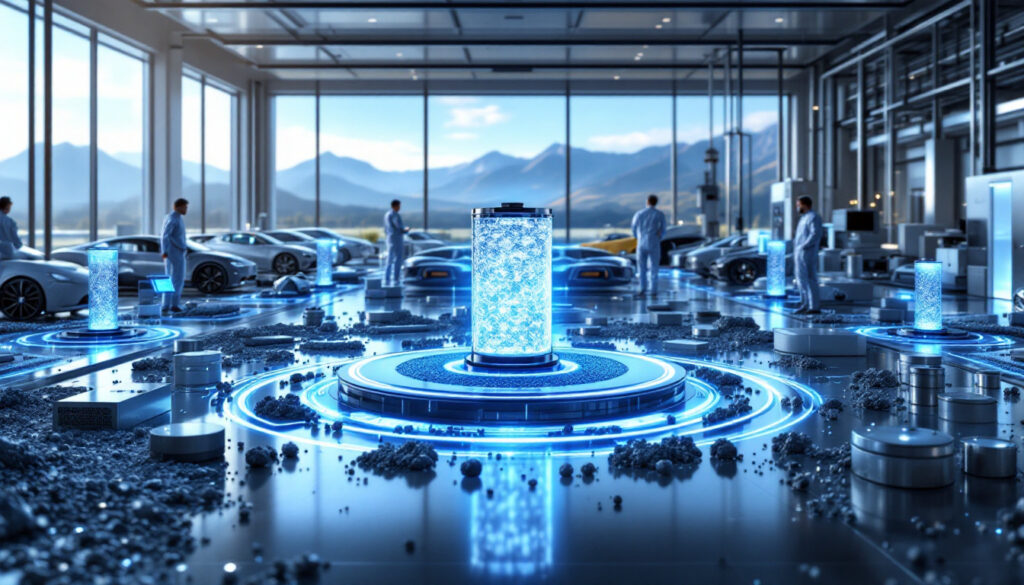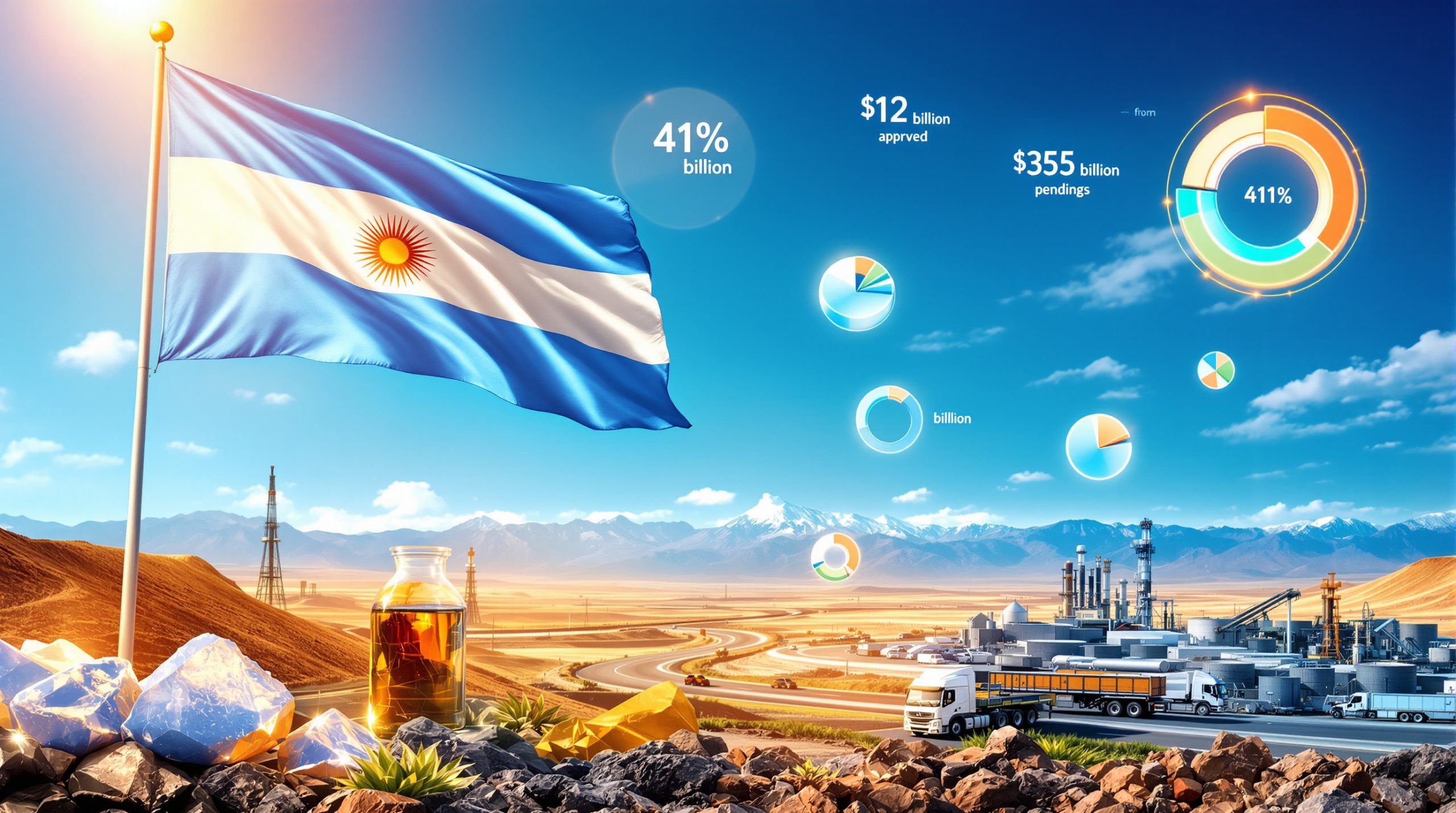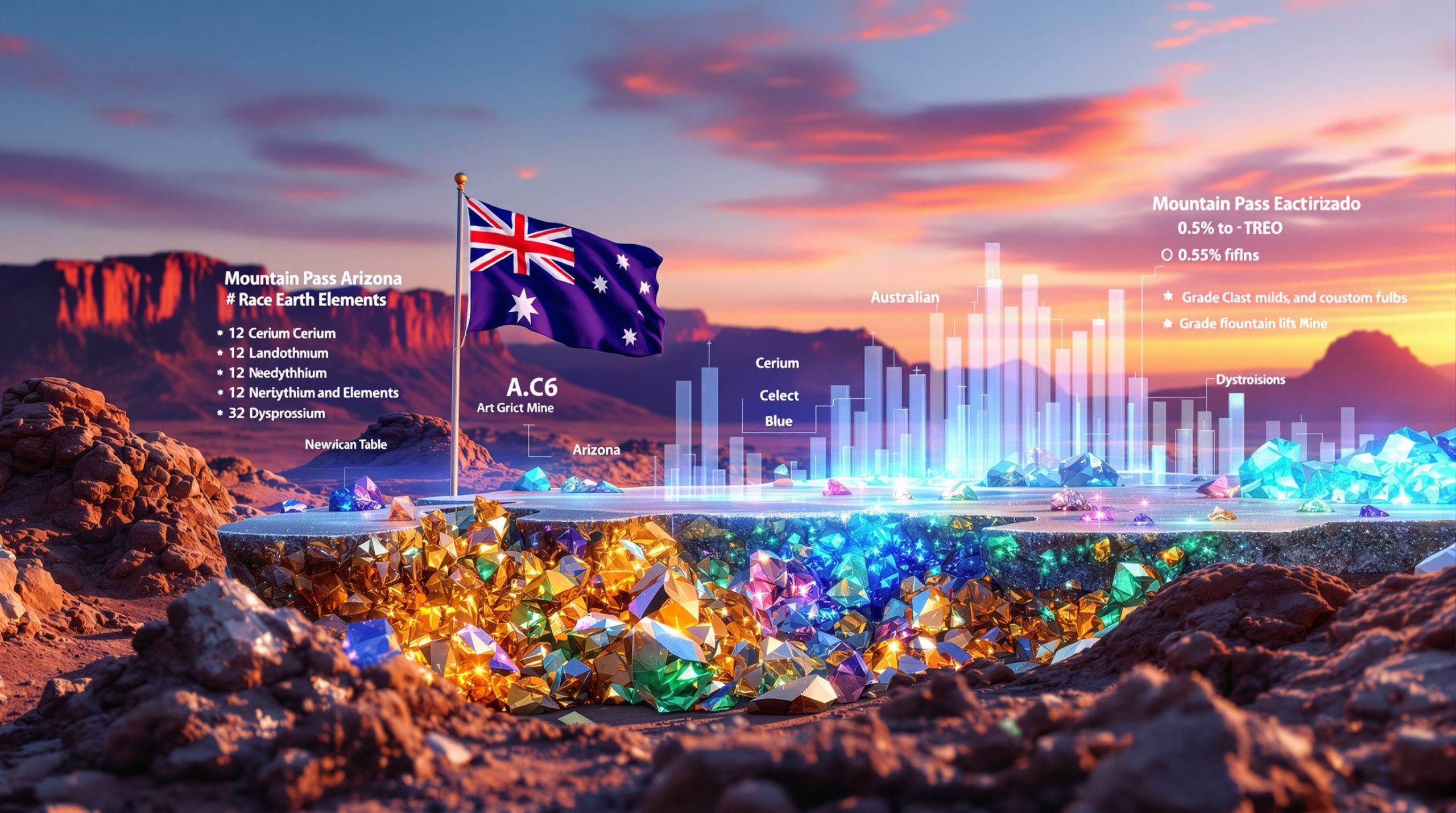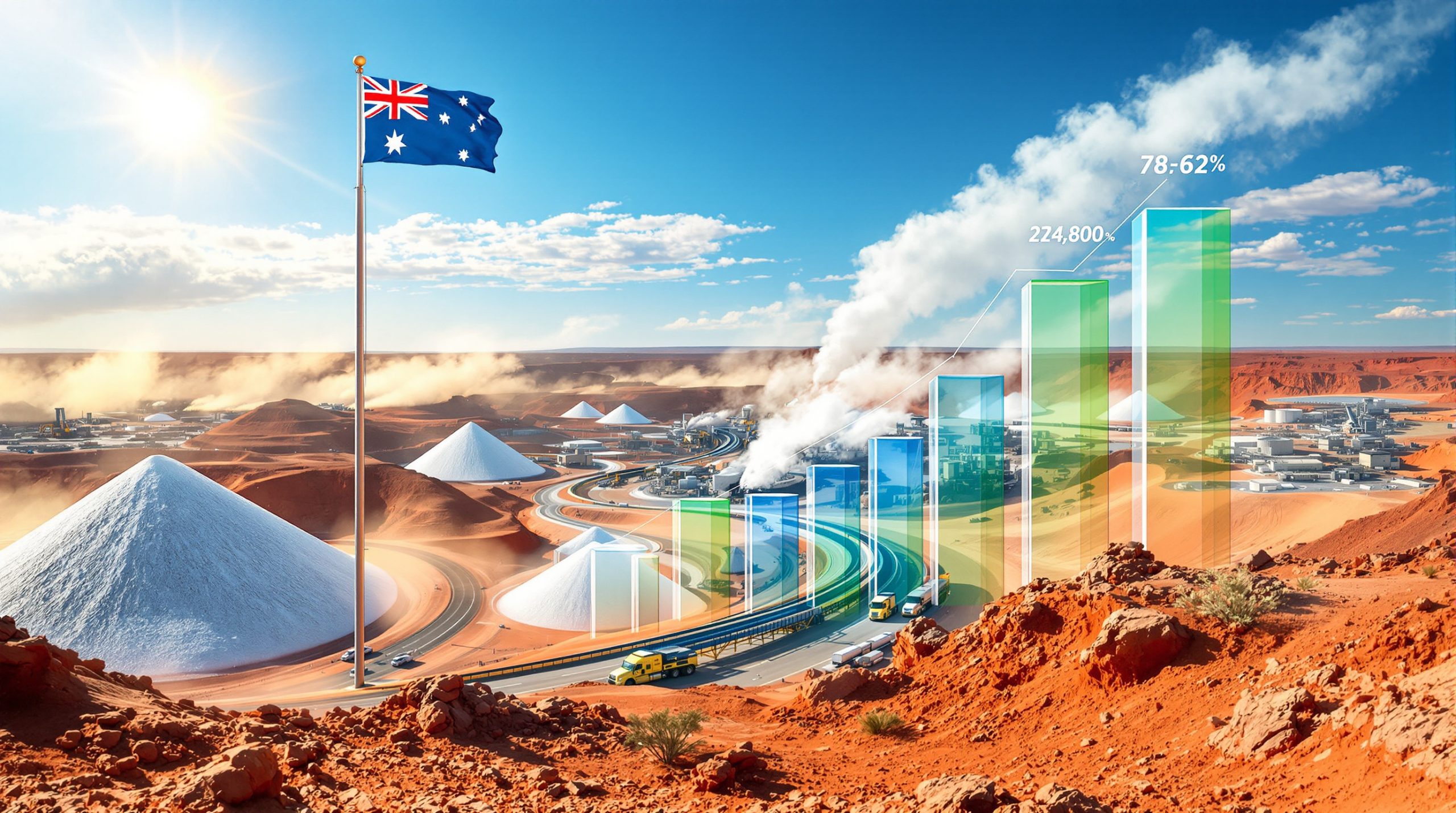Sila’s Moses Lake Plant: Revolutionizing Battery Technology Through Silicon Anode Innovation
Sila’s Moses Lake facility represents a transformative milestone in advanced battery material manufacturing, marking the United States’ strategic push to domesticate next-generation energy storage supply chains. The plant’s commissioning phase, initiated on April 15, 2025, positions it to begin full-scale production of Titan Silicon anode materials by late 2025. This innovation replaces traditional graphite anodes, promising a 20–40% increase in energy density for lithium-ion batteries while aligning with federal initiatives to reduce reliance on foreign critical mineral processing. By localizing production, Sila aims to strengthen domestic manufacturing capabilities, create high-tech jobs in Washington State, and catalyze advancements in electric vehicle (EV) performance, consumer electronics, and industrial applications amid the ongoing battery metals boom.
What is Sila’s Moses Lake Plant?
Overview of Sila’s Next-Generation Battery Materials Facility
Located in Moses Lake, Washington, the 600,000-square-foot facility is designed for auto-scale manufacturing, leveraging the region’s access to low-cost hydropower and existing industrial infrastructure. The plant’s first processing unit entered commissioning in April 2025, with full operational capacity expected to reach 10 GWh annually by 2026. This scale enables Sila to supply multiple automotive OEMs and consumer electronics manufacturers, addressing growing demand for higher-performing batteries.
Significance in the Battery Materials Landscape
Titan Silicon’s commercialization at Moses Lake disrupts the graphite-dominated anode market, which currently relies heavily on Chinese refining (over 90% of global production). By offering a drop-in replacement compatible with existing lithium-ion cell designs, Sila circumvents the need for costly manufacturing overhauls, accelerating adoption. The facility’s output could initially cover 500,000 EV battery packs annually, significantly contributing to U.S. energy security goals under the Inflation Reduction Act and potentially stabilizing the volatile lithium market outlook.
Why is the Moses Lake Plant Commissioning Important?
Critical Milestone in Plant Development
Commissioning verifies mechanical systems, safety protocols, and quality control processes, ensuring compliance with ASME and ISO standards. Successful completion of this phase—which includes electrolyte filling, cycle testing, and yield optimization—validates Sila’s proprietary deposition technology at multi-ton production scales. This step reduces technical risk for partners like Mercedes-Benz, which plans to integrate Titan Silicon into its EQG SUV batteries by 2026.
Commissioning Process Explained
The 6-month commissioning involves three stages:
- Dry testing: Validating inert gas handling and precision temperature controls (±2°C tolerance) for silicon nanoparticle synthesis.
- Wet testing: Electrolyte infiltration trials to optimize pore-filling efficiency above 95%.
- Output validation: Achieving <0.1% defect rates in anode-coated copper foils.
How Will Sila’s Technology Transform Battery Performance?
The Titan Silicon Advantage
Titan Silicon’s nano-architecture mitigates volumetric expansion (80–100% in pure silicon vs. 10–15% in Titan Silicon), enabling stable cycling over 1,000 charges. Energy density gains of 350 Wh/kg (vs. 250–300 Wh/kg in graphite systems) could extend EV ranges to 500+ miles per charge. The material’s fast-charging capabilities (15-minute 10–80% SOC) address critical consumer adoption barriers.
Applications Across Multiple Industries
- EVs: 20% weight reduction in battery packs, enabling lighter vehicle designs.
- Aerospace: Drones achieve 50-minute flight times (30% improvement).
- Grid Storage: 4-hour discharge systems with 10,000-cycle lifespans.
What Impact Will the Moses Lake Plant Have on the Battery Supply Chain?
Strengthening Domestic Battery Material Production
The plant reduces U.S. dependence on Chinese graphite imports, which face 25% tariffs under Section 301. Domestic anode production could save OEMs $500–$700 per EV battery through tariff avoidance and logistics simplification. Furthermore, the implementation of advanced lithium processing technologies throughout the supply chain complements Sila’s innovation in anode materials.
Economic and Manufacturing Implications
Moses Lake has created 300 direct jobs, with a projected 1,200 indirect jobs in material logistics and equipment maintenance. The facility’s success may catalyze a $2B+ regional battery ecosystem, including lithium hydroxide refineries and separator manufacturers. According to a recent report, the plant represents one of the largest investments in clean energy manufacturing in Washington state’s recent history.
Who is Behind Sila’s Innovation?
Company Leadership and Vision
CEO Gene Berdichevsky, Tesla’s 7th employee and lead engineer for the Roadster battery system, brings 15 years of scaling expertise. Sila’s leadership team includes veterans from Applied Materials and DuPont, combining materials science and high-volume manufacturing acumen.
Strategic Positioning in the Battery Industry
Sila’s capital-light licensing model—providing anode slurry to cell manufacturers—avoids the $5B+ costs of gigafactory construction. This approach aligns with broader industry trends toward mining 4.0 transformation and digitalization in resource extraction and processing.
What’s Next for Sila and the Moses Lake Plant?
Timeline for Full Operations
- Q3 2025: First commercial shipments to wearable electronics partners.
- Q1 2026: Automotive-grade production at 99.95% purity levels.
- 2027: Phase II expansion to 20 GWh capacity.
Future Expansion Possibilities
Modular reactor designs allow capacity doubling without structural modifications. Sila’s IP portfolio (150+ patents) covers silicon nitride coatings and binder systems, positioning it to dominate next-gen anode markets. Additionally, the company is exploring synergies with emerging direct lithium extraction technologies to further secure its supply chain.
FAQ About Sila’s Moses Lake Plant
What makes Sila’s silicon anode technology different from conventional battery materials?
Titan Silicon’s 3D porous structure, achieved through chemical vapor deposition, achieves 1,500 mAh/g capacity (4× graphite). Proprietary solid-electrolyte interphase (SEI) stabilization enables 80% capacity retention after 800 cycles.
How will Sila’s technology affect electric vehicle performance?
Mercedes-Benz’s implementation projects 620 km WLTP range (vs. 510 km in graphite-based packs) and 12-minute 10–80% charging in 800V architectures.
Conclusion: The Significance of Sila’s Moses Lake Plant in the Battery Industry
By bridging the “valley of death” between lab-scale innovation and mass production, Sila establishes a blueprint for U.S. leadership in advanced battery materials. The plant’s success could displace 200,000 metric tons of graphite imports annually by 2030 while enabling compact, high-energy storage solutions for renewable integration. As global silicon anode demand surges (projected 70% CAGR through 2030), Moses Lake positions the U.S. at the forefront of the electrification revolution.
Want to Stay Ahead of Revolutionary Battery Technology Developments?
Don’t miss critical mineral discoveries and emerging technologies that could reshape the energy storage landscape—get instant alerts powered by Discovery Alert’s proprietary Discovery IQ model, turning complex exploration data into actionable investment insights. Explore how major mineral discoveries create substantial returns by visiting the Discovery Alert discoveries page.




